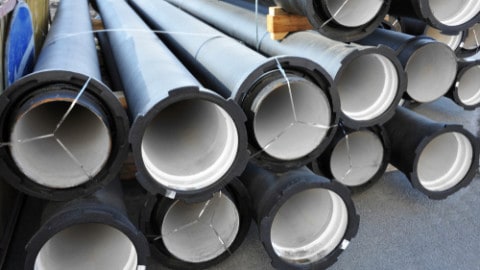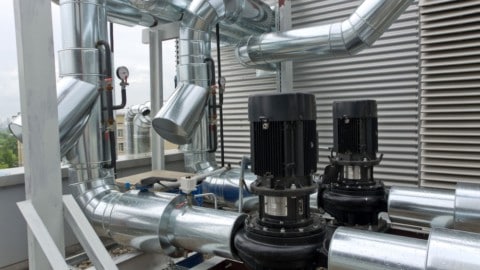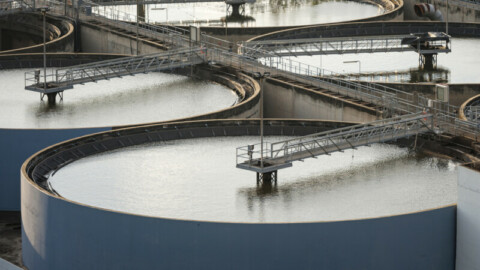by Joe Evans, Pump Ed 101
All pumps should be tested regularly, but wastewater pumps are at the top of my list as they are especially susceptible to changing system conditions. Even if a pump operates at BEP at start up, many conditions will change during the coming months and years. These include malfunctioning gate and check valves, partial blockages in the pipeline, air accumulation at a high point and new branches entering a force main, just to name a few.
Even if a pump operates at BEP at start up, many conditions will change during the coming months and years. These include malfunctioning gate and check valves, partial blockages in the pipeline, air accumulation at a high point and new branches entering a force main, just to name a few.
Clear water systems can face similar challenges but the content of the pumpage makes wastewater systems more vulnerable. These changes can have a major effect on the pump’s operating point on its H/Q curve.
Submersible wastewater pumps can be even more of a problem since they are out of sight and often out of mind.
Wastewater pumps can be problematic when operated at off BEP conditions due to the size of their impellers. The large width, required for solids passage, increases the radial forces on higher head pumps.
This leads to increased shaft deflection which will reduce seal, wear ring and bearing life. In addition to radial loading, operation to the left of BEP can give rise to damaging, suction and discharge recirculation cavitation.
In order to encourage frequent testing, I developed two, simple submersible pump field test spreadsheets for our customers. One uses a flow meter for flow measurement and allows plotting of multiple test points.
The one we will review in this article uses a drawdown test to measure pump flow. Drawdown is still the most used procedure for measuring flow in smaller and remote lift stations.
Figure 1 shows the pump test portion of the spreadsheet. The bottom right section is the drawdown test and the bottom left tests for TDH. The gray cells are the entered data and the yellow ones are the calculated data. The equations used for the calculations are shown to the right of the cells.
We will begin with the drawdown analysis
Usually a drawdown test measures the time required to remove one foot of water starting at the pump on level. The reason one foot is a preferred distance is that it provides for an ample time measurement and flow changes very little over a single foot.
The distance can be measured with a laser device, a plumb bob or a rod with starting and ending markings. It is always best to shut off the invert once the pump start level is reached in order to obtain the greatest accuracy. If this cannot be done, choose a time during the day when inflow is minimal.
As seen in Figure 1, entering the wet well diameter, drawdown distance and drawdown time is the only data needed if there is no inflow. The spreadsheet will calculate the wet volume per foot, the drawdown volume and the flow rate based upon that information.
In this example, flow rate is 1585 GPM. If inflow occurred during the drawdown test, an inflow test can be performed immediately following drawdown.
If inflow is small, a two to three inch rise is all that is needed to calculate inflow. If an inflow test is performed, the inflow volume is used for the final GPM calculation. It is always best to perform two or three drawdown tests in order to obtain the most accurate results.
Pump head is measured with a high quality pressure gauge at the pump start water level, immediately after pressure has stabilised.
The total dynamic head (TDH) is calculated by taking into account the gauge to water level elevation, pipe friction from the pump discharge to gauge location and velocity head. Friction head loss is determined using a friction table.
I considered calculating it but decided that a friction table for the proper piping material and fittings would provide a more accurate value. Discharge velocity head is calculated using the piping ID at the gauge location and the flow rate calculated during the drawdown test.
As before, the equations used to calculate these values are shown to the right of the calculator. You have probably noticed that there is a cell for pump suction diameter and a calculation for suction velocity head.
There are some who believe that when a submersible pump incorporates an external “suction bell”, suction velocity head must be subtracted from the TDH calculation. If you belong to that group, enter the suction diameter in that cell. If you do not, enter a diameter large enough to reduce suction velocity head to zero.
In our example a suction diameter of 9-inches results in a one foot velocity head at the suction. The discharge gauge reading was 51 feet but when the calculator takes into account the gauge to water level elevation, friction in the piping and the velocity heads, TDH is calculated at 70 feet.
This particular pump tested at 1585 GPM at 70’ which is approximately 97 per cent of BEP flow. Wouldn’t it be nice if all pumps ran this close to BEP?
In submersible wastewater pump and motor testing – Part 2, I will review the submersible motor testing portion of the spreadsheet. These tests will provide more pump hydraulic test results based upon motor performance and will also provide us with phase voltage and current unbalance calculations.
Figure 1




















